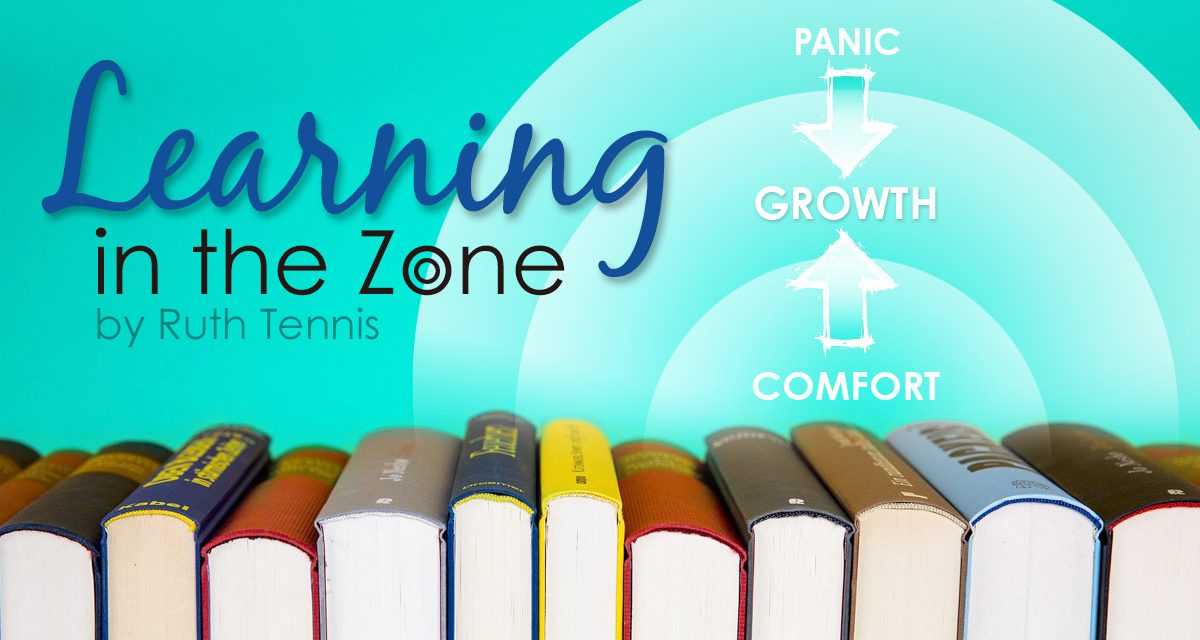For the last 6 years my daily commute has been a 45-minute drive on country roads. It’s an “auto pilot” trip. If, suddenly, my route morphed to high speed, multi-laned, and overrun with aggressive rush-hour traffic, I’d be pushed into my panic zone. My Driving Panic Indicators are easy to spot: I’m leaning forward, white knuckles grip the steering; heart’s racing. If you’re in the navigator’s seat (Heaven help you), give me good directions—quick and simple. If the pressure becomes all too much, I’ll pull over to the shoulder and quit.
Now what if I chose to enjoy a day in the city? That might prove enough motivation for me to put up with all the driving challenges. I’d prep for difficulties, map out my path, get what I need to manage the drive, work through my panic, and conquer it. The more often I choose to embrace and encounter city driving, the more practiced and capable I will become—perhaps nearing a healthy level of “auto pilot.”
Some days our students’ learning might seem on “auto pilot.” Sometimes, they may seem stuck at a skill level, unable to progress. Or maybe they’re learning something new and suddenly they’re displaying their own panic indicators. How can we help our children advance in their skills in competent, productive, and healthy ways? The Learning Zone Model is a tool you can use to identify learning responses (the good, the bad, and the bored) and instead discover how to respond in growth-fostering ways.
The Learning Zone Model identifies our learning responses with 3 zones. When we are able to use an acquired skill well, we’re in the Comfort Zone. Here tasks are fairly routine and manageable; completing them satisfies. We are in control. However, staying in this zone too long with any skill prevents further development. The Comfort Zone isn’t bad; it’s a healthy place to return to so that we can rest, process, reflect, and assimilate what we are learning in the Growth Zone. This next zone lies just beyond our comfort. Here we are challenged and develop new skills. Concentration is needed. We must exert more mental and physical energy to accomplish a task. We are open to new ideas and risk levels seem manageable and the pressure is productive. We see the tasks as attainable adventures, rewarding enough that we are willing to engage, and eventually add the skill to our comfort zone. The size of our Growth Zone will vary with the task and depend on our interpretation of the risk involved, our personal motivation, ability to use our previously learned skills or knowledge properly, and the amount of effective mentoring we receive.
At any moment, we can slip into the Panic Zone. The tasks cause extreme discomfort and are beyond reasonable expectations; we feel ill equipped and likely to fail. We are unable to cope with the new risks or progress with the challenge. All our energy is spent on managing and controlling the resulting panic; we have little energy left for learning. We’re in overload mode. Most of us can’t function at this level for long; we will try and resolve this panic however possible ASAP.
A level of fear is involved in either the Growth or the Panic zone. Which zone we go to will depend on our perceptions of and responses to this fear. If tasks feel overwhelming, our “fight or flight” tendency can turn on and we will return to our comfort zone. If we try this task again, we may need even more preparation and mentoring. Also, beware of a “false panic zone.” Sometimes, our panic indicators may flair up just because we don’t want to do the task (As a preteen, the skill of cleaning my bedroom was insurmountable. I knew what to do but just didn’t want to.).
Each of us has our own unique size of comfort, growth, and panic zones. Where one zone ends and another one begins for each learner is fairly organic and influenced by our teacher, the learning method, our practice level, giftings, learning styles, external and internal circumstances, and more. We learn to discern what will help each child learn best, their learning fear triggers, and what will move them into the growth zone with a comfortable amount of risk. As they mature, we can teach them that a manageable amount of fear is necessary. It’s a challenging job (which creates our own Parenting Growth or Panic zones!). The goal for all of us, really, is to develop a growth mindset as we approach new skills. If you’d like to investigate these concepts further, see our worksheet with some initial reflection questions and tools.
~ Ruth





